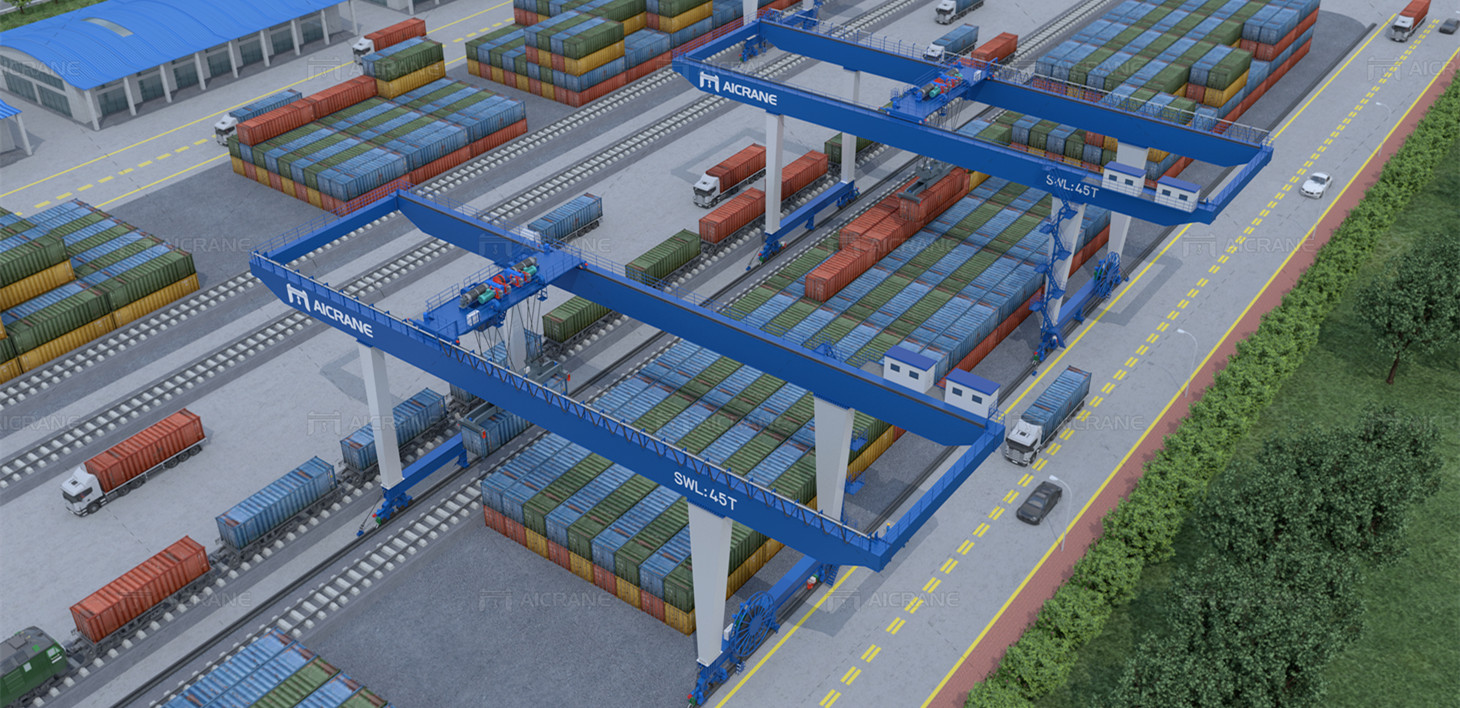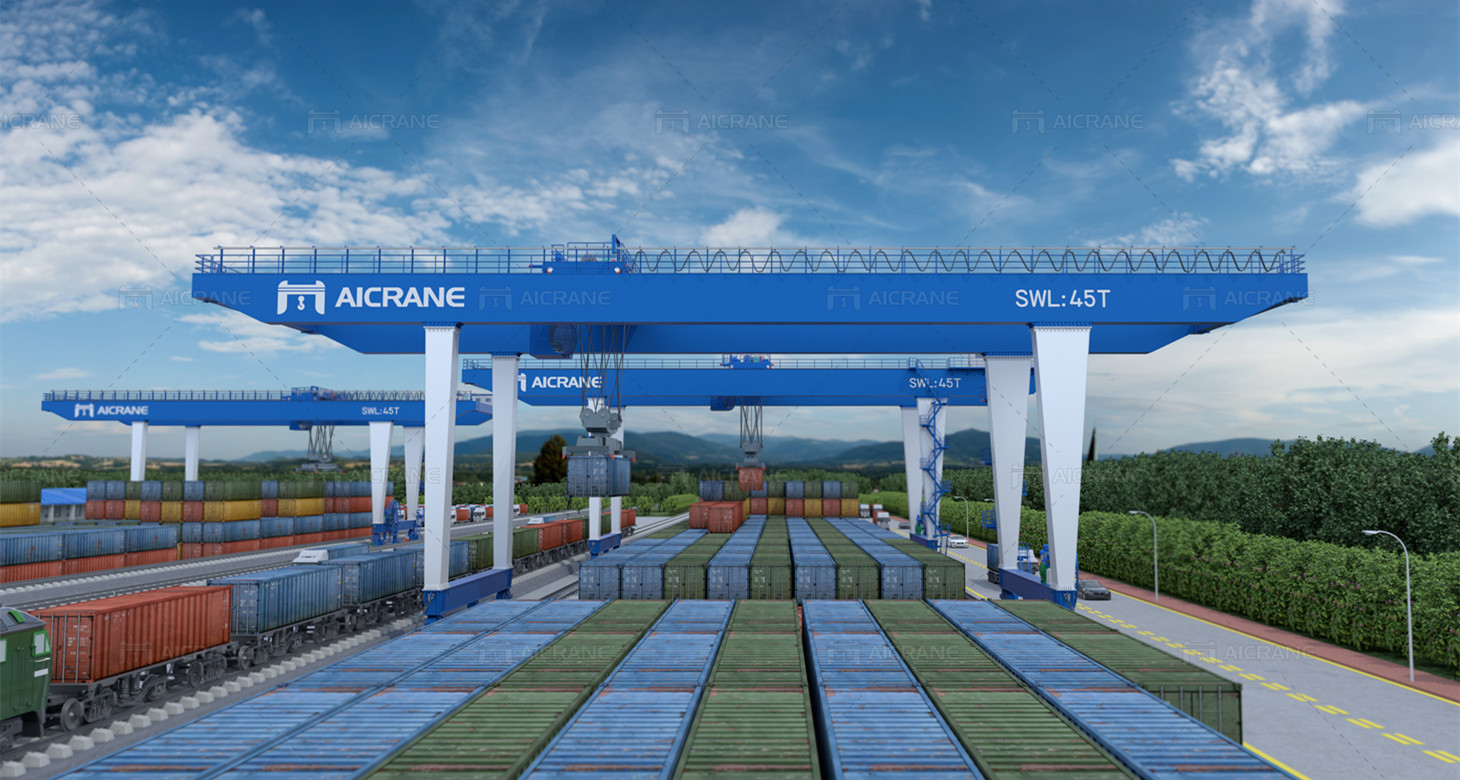Installing a gantry container involves a series of steps to ensure safe and efficient operations. Gantry containers, also known as gantry cranes or container gantries, are essential equipment in ports, terminals, and logistics centers for loading and unloading containers from ships or trucks. Proper installation is crucial to maximize the functionality, safety, and longevity of gantry container systems. Here’s a detailed guide on how to install a gantry container:

Site Preparation
Start by preparing the installation site, ensuring it is level, stable, and capable of supporting the weight and dimensions of the gantry container.
Clear any obstacles or debris from the area to provide sufficient space for the gantry crane’s footprint, including runway tracks or rails if applicable.
Foundation Construction
Construct a solid foundation for the gantry container, typically using reinforced concrete pads or piles. The foundation should be designed to withstand the crane’s weight, dynamic loads, and operational forces.
Follow the specifications of gantry crane manufacturer and engineering guidelines for foundation dimensions, depth, reinforcement, and concrete quality to ensure structural integrity.
Installation of Runway Tracks or Rails
If the gantry container requires runway tracks or rails, install them securely on the foundation according to the specified layout and alignment.
Ensure that the tracks or rails are level, straight, and properly anchored to support the smooth movement of the gantry crane along the runway.
Assemble the Gantry Structure
Begin assembling the gantry structure, including the main beams, legs, cross beams, trolley beam, and gantry frame components.
Follow the manufacturer’s assembly instructions, use appropriate lifting equipment, and ensure proper alignment and connection of structural elements.
Mounting of Crane Components
Install the crane components onto the gantry structure, including the hoist, trolley, electrical panels, control systems, safety devices, and any specialized lifting attachments.
Connect electrical wiring, hydraulic hoses, and mechanical components according to the manufacturer’s specifications and safety guidelines.

Testing and Calibration
Conduct thorough testing and calibration of the gantry container system before putting it into operation. This includes functional tests of hoisting, lowering, traversing, and emergency stop functions.
Verify proper alignment, clearances, limits, and safety features to ensure smooth and safe crane operation.
Safety Measures and Compliance
Implement safety measures such as warning signs, barriers, guardrails, and safety interlocks to prevent unauthorized access and ensure safe working conditions around the gantry container.
Ensure compliance with relevant safety standards, regulations, and industry guidelines for crane installation, operation, and maintenance.
Operator Training
Provide comprehensive training to crane operators and maintenance personnel on safe operation procedures, equipment functionality, emergency protocols, and routine maintenance tasks.
Emphasize the importance of regular inspections, lubrication, and preventive maintenance to extend the lifespan of the gantry container and minimize downtime.
Documentation and Certification
Maintain detailed documentation of the gantry container installation, including engineering drawings, specifications, assembly records, test reports, and certification documents.
Obtain necessary permits, inspections, and certifications from regulatory authorities or third-party certifying bodies to ensure compliance and legal operation of the gantry container.
Regular Maintenance and Inspection
Establish a regular maintenance schedule and inspection program for the gantry container, including daily checks, periodic inspections, and annual maintenance tasks.
Keep detailed maintenance records, address any issues promptly, and replace worn-out or damaged components to ensure safe and efficient rubber tyred crane operation.
In conclusion, the installation of a gantry container requires careful planning, precise execution, adherence to safety standards, and thorough testing and calibration. By following these steps and best practices, businesses can successfully install and operate a gantry container system to streamline container handling operations, improve productivity, and ensure a safe working environment.